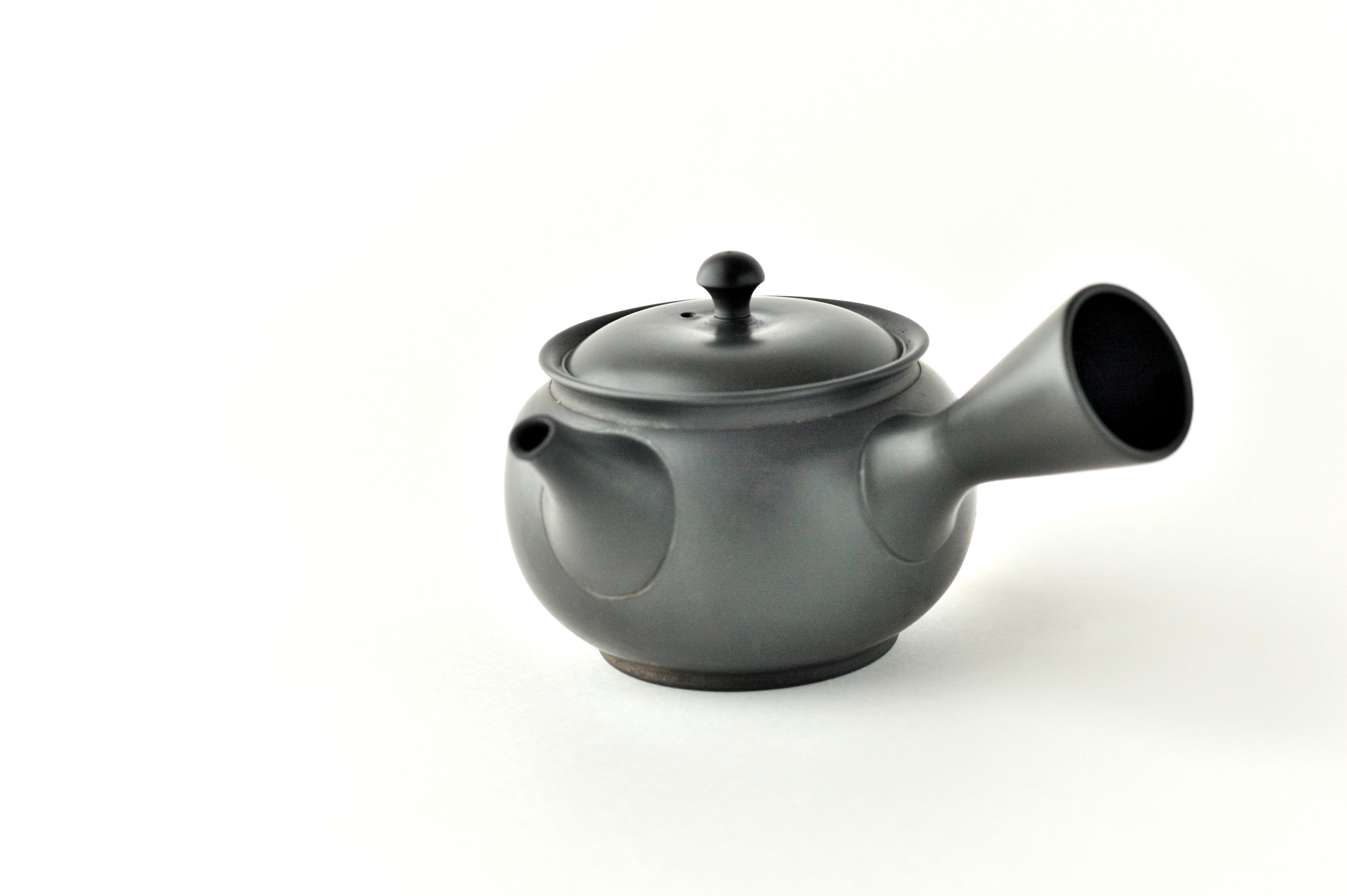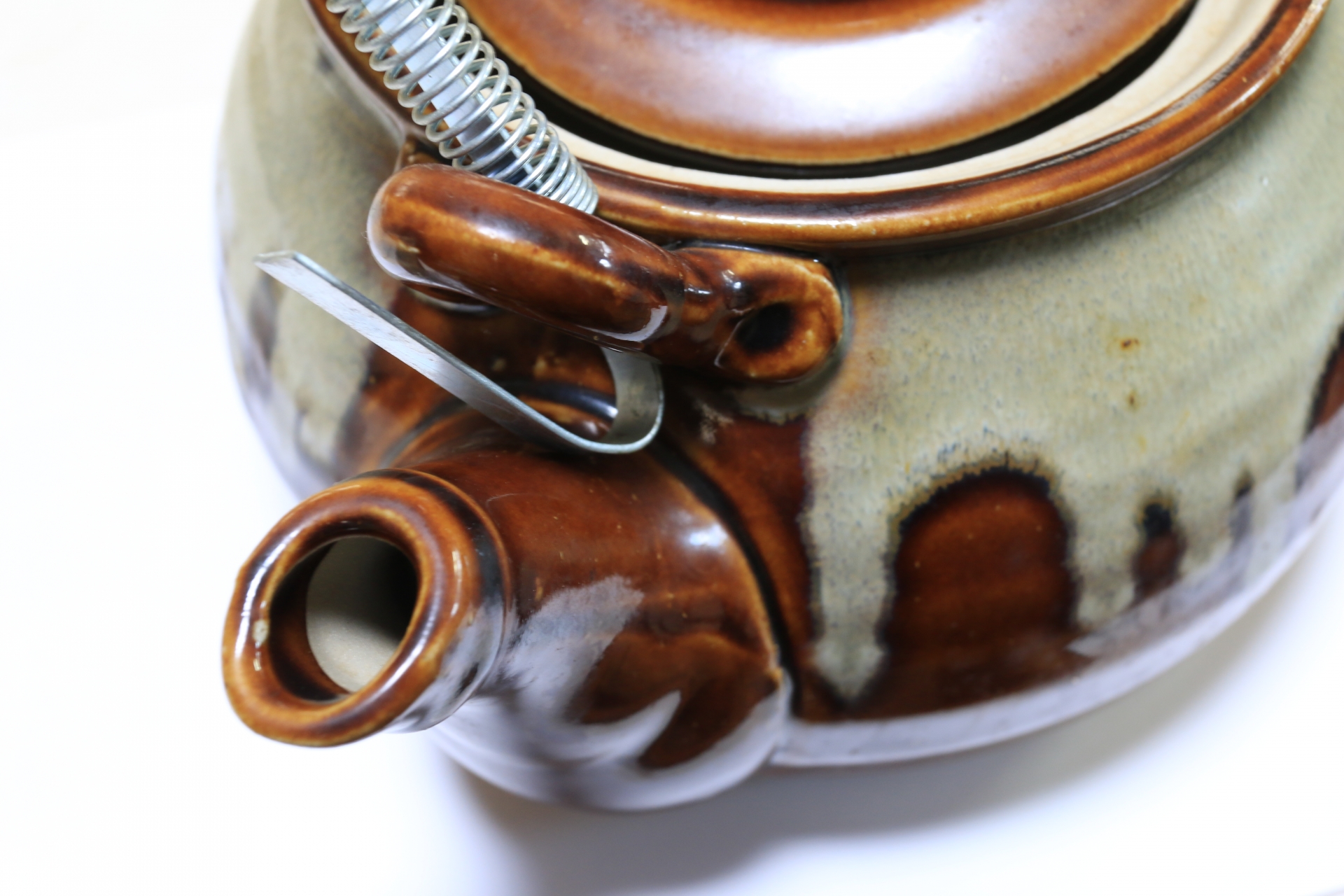Let's use a teapot for deep-steamed (Fukamushi) tea.
Deep-steamed tea has fine leaves, so it is said that the strainer in the teapot is prone to clogging. However, using a teapot designed for deep-steamed tea can prevent the strainer from clogging.
In addition, cleaning the teapot can remove tea stains and clogged tea leaves.
Deep-steamed tea is a type of tea in which the leaves are steamed for a long time to bring out their umami and richness.
However, the manufacturing process tends to break the tea leaves into small pieces, which can clog the strainer.
Choosing a teapot for deep-steamed tea
If you drink deep-steamed tea, we recommend choosing a teapot designed for deep-steamed tea. Teapots for deep-steamed tea have a large strainer and a high tea leaf passage rate, making them less prone to clogging.
Teapot maintenance
If tea leaves become clogged in the teapot strainer, you can clean it using the following methods.
1) Pour hot water: Pour hot water to float and flush out the tea leaves.
2) Use baking soda: Soak in hot water mixed with baking soda to float the tea leaves.
3) Use bleach: Soak in hot water mixed with oxygen bleach to float the tea leaves.
4) Use a toothbrush: Gently scrub the mesh with an unused toothbrush to remove the tea leaves.
Use detergent: Wash thoroughly with detergent.
Other
Deep-steamed tea has fine tea leaves, so using a teapot with a fine mesh strainer can cause clogging.
When drinking deep-steamed tea, we recommend using a teapot designed for deep-steamed tea.
Regular maintenance of your teapot can prevent tea stains and clogging.
For regular maintenance, simply rinsing with water or lukewarm water is sufficient.
If tea stains or clogging are severe, using baking soda or oxygen-based bleach can be effective.
When using a cleaning agent, rinse thoroughly and dry before use.
We recommend teapots made of Tokoname-yaki or Manji-yaki clay
Tokonameyaki
The unique soil and manufacturing method produce
a mellow tea flavor and high functionality.
Tokoname ware teapots are characterized by their mellow tea flavor and high functionality, which are the result of unique clay and manufacturing methods.
In particular, unglazed teapots are said to absorb the astringency and unpleasant flavors of tea, making it more delicious. In addition,
the precision of the lid and spout are also highly regarded.
The clay reacts with tannins, the astringent components of tea, to soften the taste of tea
Tokoname ware is made from clay rich in iron (red clay).
This clay is said to react with tannins, the astringent components of tea, to soften the taste of tea.
For deep-steamed tea, we recommend fine-mesh stainless steel tea strainers or ceramic mesh tea strainers.
Bankoyaki
Excellent far-infrared effect, allowing tea leaves to be thoroughly extracted
Bankoyaki teapots are Japanese tea utensils made mainly in Yokkaichi City, Mie Prefecture.
The clay used in Bankoyaki has excellent far-infrared properties, which allow tea leaves to be extracted thoroughly.
This property is said to bring out the flavor and aroma of tea and add depth to its taste. It is especially suitable for teas that emphasize aroma, such as sencha and bancha.
Additionally, Bankoyaki contains microscopic pores, giving it excellent heat retention properties and making it less prone to cooling.
For this reason, it is widely used in earthenware pots.
The ability to maintain heat allows you to enjoy the freshness of freshly brewed tea for longer, which is another delightful feature.
The fact that the material itself contributes to the flavor is what makes the Bankoyaki teapot so appealing.



